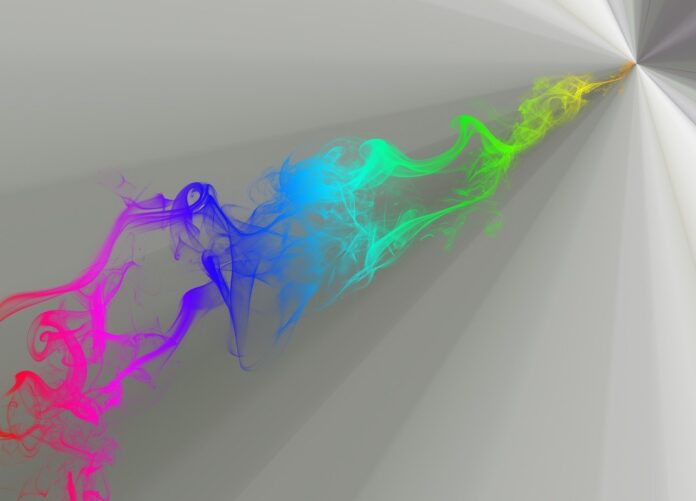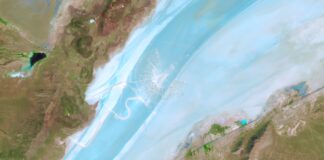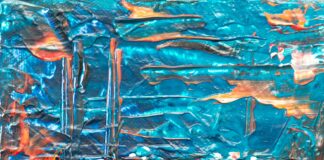Raytracing is a rendering technique used in computer graphics to simulate the way light interacts with objects in a virtual scene. Unlike traditional rasterization methods that approximate light and shadow effects, raytracing aims to achieve more realistic and accurate imagery by tracing the path of light rays as they interact with surfaces in a scene. This technique has become increasingly prominent in recent years due to advancements in hardware capabilities and its ability to produce highly realistic visual effects, making it a cornerstone in the field of computer-generated imagery (CGI) and real-time graphics.
Ray Casting and Tracing Paths
At its core, raytracing involves simulating the behavior of light rays as they travel through a scene. This process begins with casting rays from the viewer’s eye (or camera) through each pixel on the screen and into the scene. These rays then intersect with objects or surfaces, where they may bounce, reflect, or refract according to the material properties of the surfaces they encounter. By tracing the path of each ray and calculating how it interacts with objects and light sources, raytracing can simulate complex lighting effects such as shadows, reflections, and global illumination.
Global Illumination and Realistic Lighting
One of the key advantages of raytracing over traditional rendering methods is its ability to simulate global illumination accurately. Global illumination refers to the realistic simulation of indirect lighting in a scene, including effects such as soft shadows, color bleeding (where light from one surface affects the color of nearby surfaces), and ambient occlusion (simulating the softening of shadows in areas where objects are close together). These effects contribute significantly to the realism and atmosphere of rendered images, enhancing the perception of depth and realism.
Reflections, Refractions, and Transparency
Raytracing excels in rendering reflective and transparent surfaces realistically. When a ray intersects with a reflective surface, it can be reflected according to the law of reflection, taking into account the angle of incidence. This allows for accurate rendering of mirror-like surfaces and glossy reflections, which are challenging to achieve with rasterization techniques. Similarly, when rays pass through transparent materials such as glass or water, raytracing can accurately simulate refraction, where the direction of the ray changes based on the refractive index of the material. These capabilities make raytracing indispensable for applications requiring detailed simulation of transparent and reflective surfaces.
Shadow Rendering and Soft Shadows
Shadows play a crucial role in creating depth and realism in rendered images. Raytracing can simulate shadows more accurately than rasterization methods by tracing rays from each pixel toward light sources and determining if they intersect with objects. This allows for the accurate calculation of shadow patterns, including soft shadows caused by light sources with finite sizes or indirect lighting. Soft shadows are particularly challenging to simulate with rasterization but are naturally handled by raytracing, contributing to the overall realism of rendered scenes.
Applications and Hardware Acceleration
While historically computationally intensive, raytracing has seen significant advancements in recent years, driven by hardware acceleration techniques such as specialized graphics processing units (GPUs) and dedicated raytracing cores. Modern GPUs and graphics APIs (such as DirectX Raytracing and Vulkan Ray Tracing) support hardware-accelerated raytracing, enabling real-time or near-real-time rendering of raytraced scenes in video games and interactive applications. This has expanded the application of raytracing beyond offline rendering to include real-time rendering for gaming, virtual reality (VR), architectural visualization, and film production.
Ray-Bounded Volumes and Acceleration Structures
Efficiently tracing rays through complex scenes with many objects requires the use of acceleration structures. These structures, such as bounding volume hierarchies (BVHs) or kd-trees, organize objects in a scene spatially to expedite ray intersection calculations. BVHs, for example, partition the scene into hierarchical bounding volumes, allowing rays to quickly determine which objects they may intersect with. This acceleration technique significantly reduces the number of intersection tests needed per ray, making raytracing feasible for rendering large and detailed scenes in real-time applications like games and interactive simulations.
Material Properties and Shading Models
Raytracing relies on accurate modeling of material properties and shading models to simulate how light interacts with different surfaces. Materials in a raytraced scene are typically defined by their optical properties such as reflectivity, transparency, roughness, and emissivity. Shading models, such as the Phong or Cook-Torrance models, dictate how light is reflected or scattered from surfaces based on these properties. Raytracing algorithms compute the contributions of direct and indirect light to determine the final color and appearance of each pixel in the rendered image, ensuring that materials appear realistic under various lighting conditions.
Path Tracing and Monte Carlo Integration
Path tracing is a variant of raytracing that simulates the behavior of light rays more comprehensively by tracing rays not only from the camera but also from light sources and recursively tracing rays for global illumination effects. This technique uses Monte Carlo integration to approximate the final color of each pixel by sampling multiple rays per pixel and averaging their contributions. Path tracing inherently supports effects such as caustics (focused light patterns formed by reflection or refraction), subsurface scattering (light penetration and diffusion through translucent materials), and volumetric lighting (light interactions within participating media like fog or smoke). While computationally intensive, path tracing produces highly realistic images and is widely used in offline rendering for film and animation production.
Hybrid Rendering Approaches
To balance the computational demands of raytracing with the performance requirements of real-time applications, developers often employ hybrid rendering approaches. These techniques combine raytracing with rasterization or other approximation methods to achieve high-quality visuals at interactive frame rates. Hybrid rendering allows for the selective use of raytracing in critical areas of a scene, such as reflections, shadows, or global illumination, while using rasterization for less complex aspects like geometry rendering. This approach leverages the strengths of both techniques, optimizing rendering performance without compromising visual fidelity, and is increasingly adopted in modern games and simulations.
Future Trends and Applications
The future of raytracing is poised for further advancements in hardware capabilities, algorithmic optimizations, and applications across diverse fields. With the ongoing development of specialized raytracing hardware in GPUs, such as NVIDIA’s RTX series, real-time raytracing is becoming more accessible and efficient. Beyond gaming and entertainment, raytracing is finding applications in fields such as automotive design, virtual reality training simulations, medical imaging, and architectural visualization. These advancements promise to expand the boundaries of what can be achieved in visual fidelity, realism, and interactive experiences across various industries and domains.
Conclusion
Raytracing continues to evolve as a foundational technology in computer graphics, offering unparalleled capabilities in simulating light interactions and producing realistic imagery. From its origins in offline rendering for film and animation to its integration into real-time applications through hardware acceleration and hybrid rendering techniques, raytracing remains at the forefront of innovation in visual computing. As advancements in hardware and software continue to drive its adoption and refinement, raytracing is expected to play a pivotal role in shaping the future of interactive graphics, virtual environments, and digital content creation.














